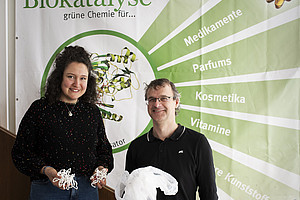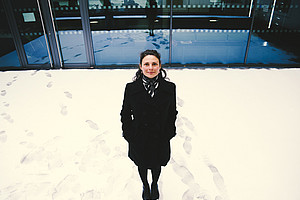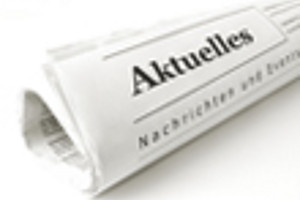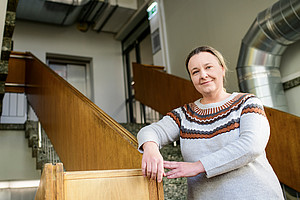Dr. Tamara Favaro is an Ernst Mach-worldwide fellow at the University of Graz, where she conducts a research project on “Fostering LECs through Innovation in Law & Technology: the cases of Italy and Austria”. The aim is to analyze how new technologies, like blockchains, might allow local governments and Local Energy Communities (LECs) in promoting the so-called Clean Energy Transition.
Tamara is a Post-Doctoral Researcher in “Key Digital Technologies and Markets Regulation” at the University of Pisa, Department of Law. At the same University, she currently teaches as an adjunct lecturer “Regulatory Law” (Diritto della Regolamentazione) in the Master’s Degree course in Innovation Law for Business and Institutions, and “Regulation of Public Services” (Diritto della regolazione dei servizi pubblici) at the LLM in Economic Law and Public Management. She is a Research Associate at the University College London Centre for Blockchain Technologies (UCL CBT) and also a member of the Steering Committee of the Blockchains and Artificial intelligence for Business, Economics and Law (BABEL) Research Unit, established in the Department of Economics and Management (aka DiSEI) at the University of Florence. She is a member of the Jean Monnet Module European Health Law and Technology academic staff, funded in 2020 by the European Commission.
Tamara collaborates with the Interdepartmental Research Centre on Law and Technologies, “Diritto e Tecnologie di Frontiera”, based in Pisa, and she is a co-founder of “Legal Hackers Pisa”.
She holds a Ph.D. in Economic Law from the University of Pisa, with a dissertation on technological and legal innovation in the regulation of the «Energy Transition». Previously, she earned a five-year Master’s degree in Law (summa cum laude) from the University of Pisa, by discussing a thesis on ex-ante Regulation and Antitrust Policy in the Digital marketplace.
She has published a book on the role of digital technologies in regulating energy transition (“Regolare la «transizione energetica»: Stato, Mercato, Innovazione”, Cedam, 2020) and many essays on Technology and Regulation. In particular, she investigated the role of blockchain and smart contracts in regulating public services; digital platforms and public services; urban regeneration and digitally oriented programming of smart cities; central bank digital currencies; the possible governance of medicines and diagnostic devices based on nanotechnology.
In the field of the interplay between Regulation and Technology, she also gave talks at the London School of Economics, Ca’ Foscari University of Venice, Tilburg University, LUMSA University of Rome, Ankara University, and Pisa University.
She was awarded the National Scientific Qualification as Associate Professor in 2020 and she was admitted to the Italian Lawyers Bar in 2019.
During her stay at the University of Graz Tamara will be working within the H2020 project "EC² - Energy Citizenship and Energy Communities for a Clean Energy Transition".
Selected Publications
Favaro, T. Central Bank Digital Currencies e gestione della crisi. Le possibili implicazioni di un “euro digitale” (“Central Bank Digital Currencies and crisis management. The possible implications of a «digital euro»”). In: U., Malvagna, A., Sciarrone Alibrandi: Sistema produttivo e finanziario post Covid-19: dall’efficienza alla sostenibilità. Voci dal diritto dell’economia. Pisa: Pacini Giuridica: 337-245 (2021).
Favaro, T. Regolare la «transizione energetica»: Stato, Mercato, Innovazione (“Regulating the Energy Transition: State, Market, and Innovation”). Padua: Cedam: 1-284 (2020).
Favaro, T. Transizione energetica e amministrazione decentrata (“Energy Transition and Decentralized administration”). GiustAmm.it, (5), 1-28 (2020).
Favaro, T. La valuta digitale della Banca Centrale tra funzione monetaria e tutela del risparmio (“Central Bank Digital Currency: towards a new power of Savings Protection?”). Rivista Trimestrale di Diritto dell’Economia, (2), 330-364 (2020). Available at: http://www.fondazionecapriglione.luiss.it/2020_02_RTDE.pdf.
Favaro, T. Smart contracts e intervento pubblico. Integrazione o sostituzione del potere regolatorio e sanzionatorio? (“Smart contracts and public intervention. Integration or replacement of the regulatory and sanctioning power?”). Amministrazione in Cammino, 1-20 (2020). Available at: https://www.amministrazioneincammino.luiss.it/2020/02/23/smart-contracts-e-intervento-pubblico-integrazione-o-sostituzione-del-potere-regolatorio-e-sanzionatorio/.
Favaro, T. Verso la smart city: sviluppo economico e rigenerazione urbana (“Towards the smart city: economic development and urban regeneration”). Rivista Giuridica dell’Edilizia, (2), 87-120 (2020).
Favaro, T. Dai brownfields alle smart cities. Rigenerazione urbana e programmazioni digitalmente orientate (“From brownfields to smart cities. Urban regeneration and digitally oriented programming”). In: M., Passalacqua, B., Pozzo: Diritto e rigenerazione dei Brownfields. Amministrazione, obblighi civilistici, tutele. Turin: Giappichelli: 169-190 (2019).
Favaro, T. Blockchain technologies for electricity trading regulation. In: Current and future challenges to energy security – 4th AIEE Energy Symposium Conference Proceedings. Rome: AIEE: 223-235 (2019).
Favaro, T. Blockchain technologies for electricity trading regulation. In: Current and future challenges to energy security – 4th AIEE Energy Symposium Conference Proceedings. Rome: AIEE: 66-67 (2019).
Favaro, T. Può la tecnologia regolare? Blockchain e «scambio tra pari» di energia rinnovabile (“Can Technology regulate? Blockchain and «peer to peer trading» of renewable energy”). Rivista della regolazione dei mercati, (2), 294-318 (2019). Available at: http://www.rivistadellaregolazionedeimercati.it/blockchain-e-scambio-tra-pari-di-energia-rinnovabile.
Favaro, T. Blockchain per l’intervento pubblico. Un possibile ritorno ai “luoghi” dell’economia? (“Blockchain for public intervention. A possible return to the “places” of the economy?”). In A., Antonucci, M., De Poli, A., Urbani: I luoghi dell’Economia. Le dimensioni della sovranità, Turin: Giappichelli: 39-46 (2019).






